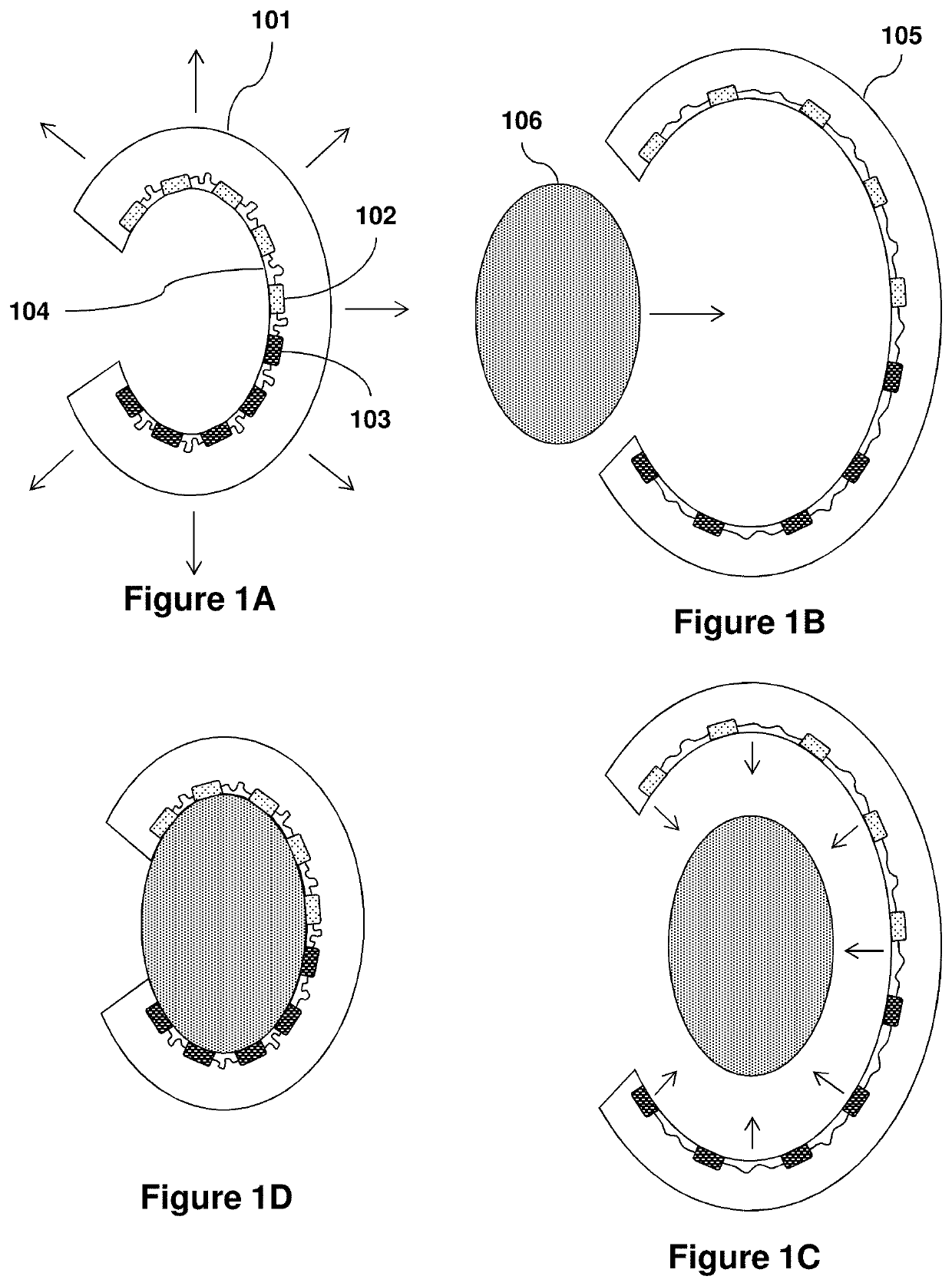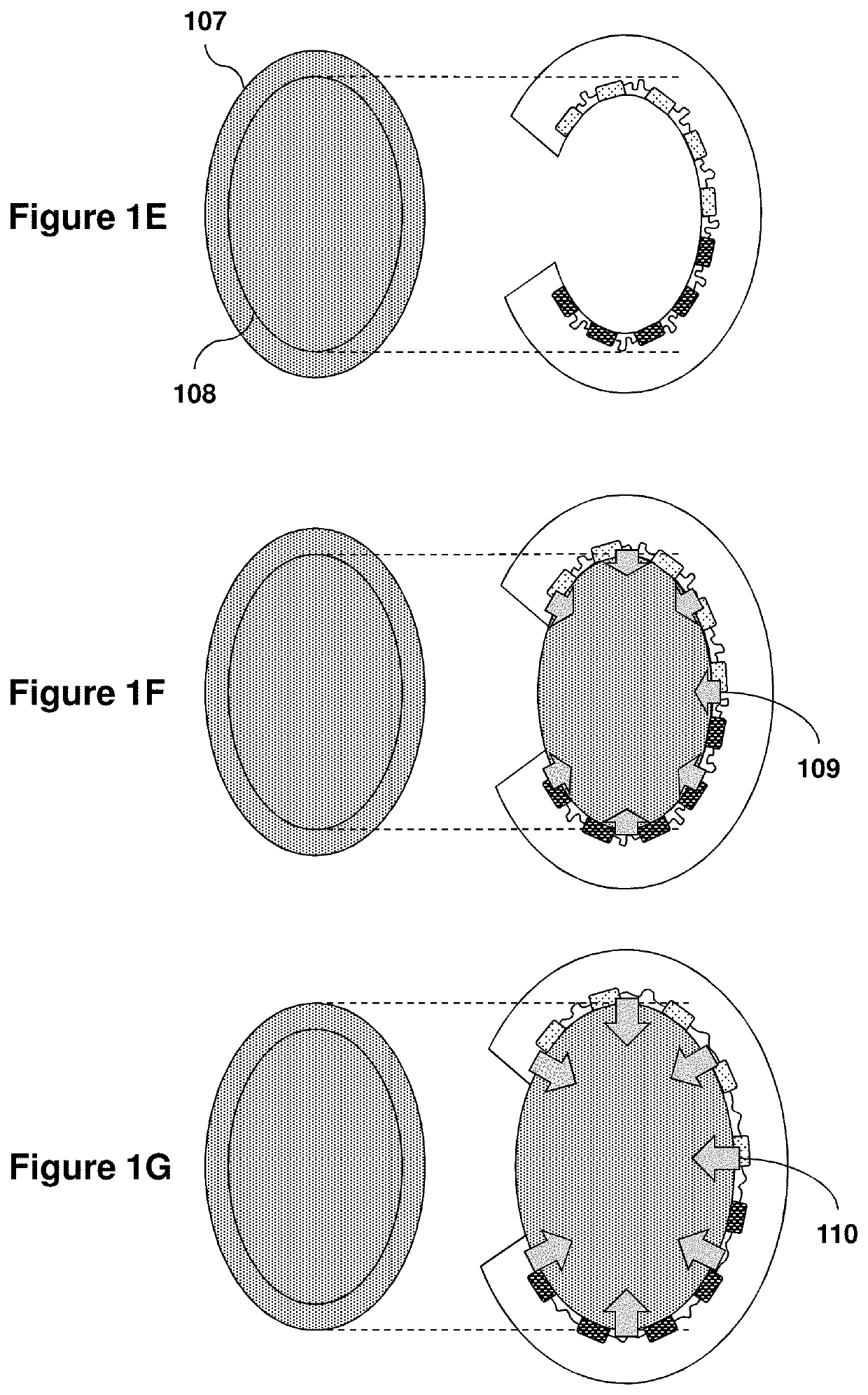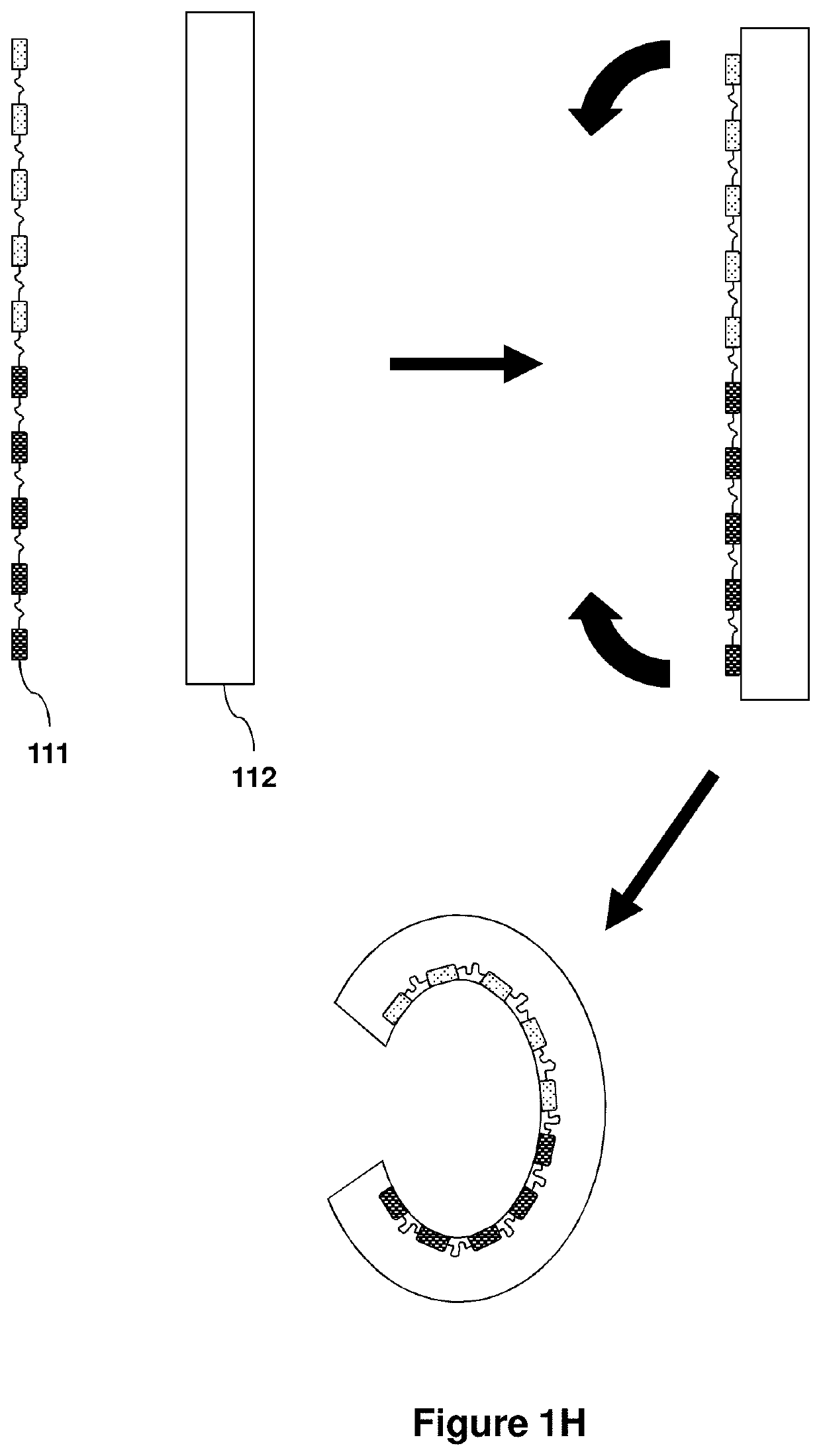Organ mounted electronics
a technology of electronic components and organs, applied in the field of organ mounted electronics, can solve the problems of prolonging ep clinical procedures, affecting the real-time mapping of transient abnormal rhythms, and sudden cardiac arrest, so as to reduce the risk of damage, reduce the size or volume, and prevent or reduce the current of leakage.
- Summary
- Abstract
- Description
- Claims
- Application Information
AI Technical Summary
Benefits of technology
Problems solved by technology
Method used
Image
Examples
example 1
unctional Integumentary Membranes for Spatiotemporal Measurement / Stimulation Across the Entire Epicardium
[0144]Means for high-density, large area, conformal multiparametric physiological mapping and stimulation are critically important in both basic and clinical cardiology. Recently developed conformal electronic systems enable important capabilities, but their embodiments as 2D sheets prevent integration over the full 3D epicardial surface and reliable contact for chronic use without sutures or adhesives. This example presents a qualitatively different approach that exploits 3D elastic membranes shaped precisely to match the epicardium of the heart via the techniques of 3D printing, as a platform for deformable arrays of multifunctional sensors, electronic and optoelectronic components. Such integumentary devices completely envelop the heart, in a form-fitting manner, as a sort of artificial pericardium. Inherent elasticity in the soft membranes provides a mechanically stable bioti...
example 2
nd Methods for Low-Energy Defibrillation
[0497]The biomedical devices and methods of the present invention support a broad range of therapeutic and diagnostic applications including multiparametric cardiac mapping and stimulation. This example provides experimental results demonstrating the efficacy of the present devices for use in low-energy defibrillation and thermal sensing via establishing a conformal interface with large areas of cardiac tissue.
[0498]FIGS. 23 and 24 provide optical images of a 3D-multifunctional integumentary device of the invention. FIG. 23 shows the 3D-multifunctional integumentary device integrated with a rabbit heart demonstrating the ability to establish conformal contact with large areas of the heart surface. In this figure, the black arrows indicate the defibrillation electrodes having a fractal-based design and temperature sensor arrays. The defibrillation electrodes are for delivering epicardial electrotherapy and the temperature sensors provide for fe...
example 3
nd Methods for Detection of Extracellular Potassium and Hydrogen Ion Concentrations
[0506]The biomedical devices and methods of the present invention support a broad range of therapeutic and diagnostic applications including multiparametric cardiac mapping and stimulation. This example provides experimental results demonstrating real-time detection of extracellular potassium and hydrogen ion concentrations in myocardial ischemia using a 3D-MIM device comprising intimately integrated ion selective electrodes.
[0507]Extracellular potassium (i.e. K+) and hydrogen ion (i.e., pH) have been recognized as major determinants of changes in cardiac electrical activity and the occurrence of arrhythmias in myocardial ischemia. Thus, flexible and stretchable ion selective potentiometric sensors have been developed to monitor these ions quantitatively in situ, as well as to provide intimate bio-integration on a cardiovascular 3D-MIM device. The sensors were fabricated by photolithography and transf...
PUM
 Login to View More
Login to View More Abstract
Description
Claims
Application Information
 Login to View More
Login to View More - R&D
- Intellectual Property
- Life Sciences
- Materials
- Tech Scout
- Unparalleled Data Quality
- Higher Quality Content
- 60% Fewer Hallucinations
Browse by: Latest US Patents, China's latest patents, Technical Efficacy Thesaurus, Application Domain, Technology Topic, Popular Technical Reports.
© 2025 PatSnap. All rights reserved.Legal|Privacy policy|Modern Slavery Act Transparency Statement|Sitemap|About US| Contact US: help@patsnap.com



